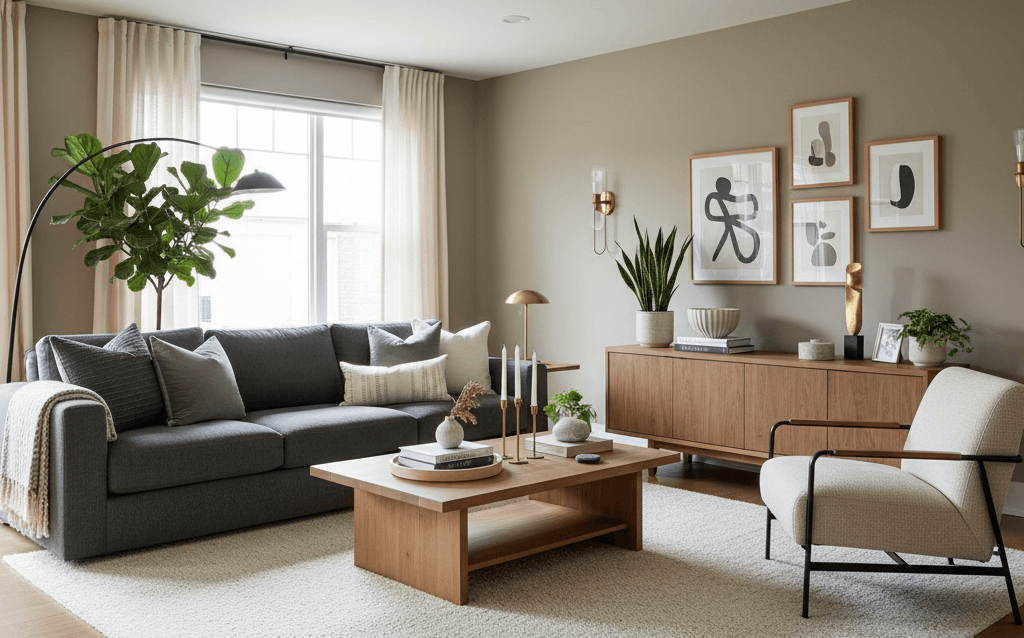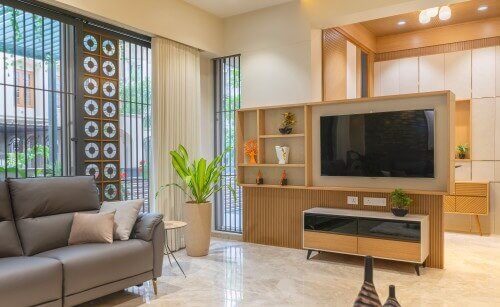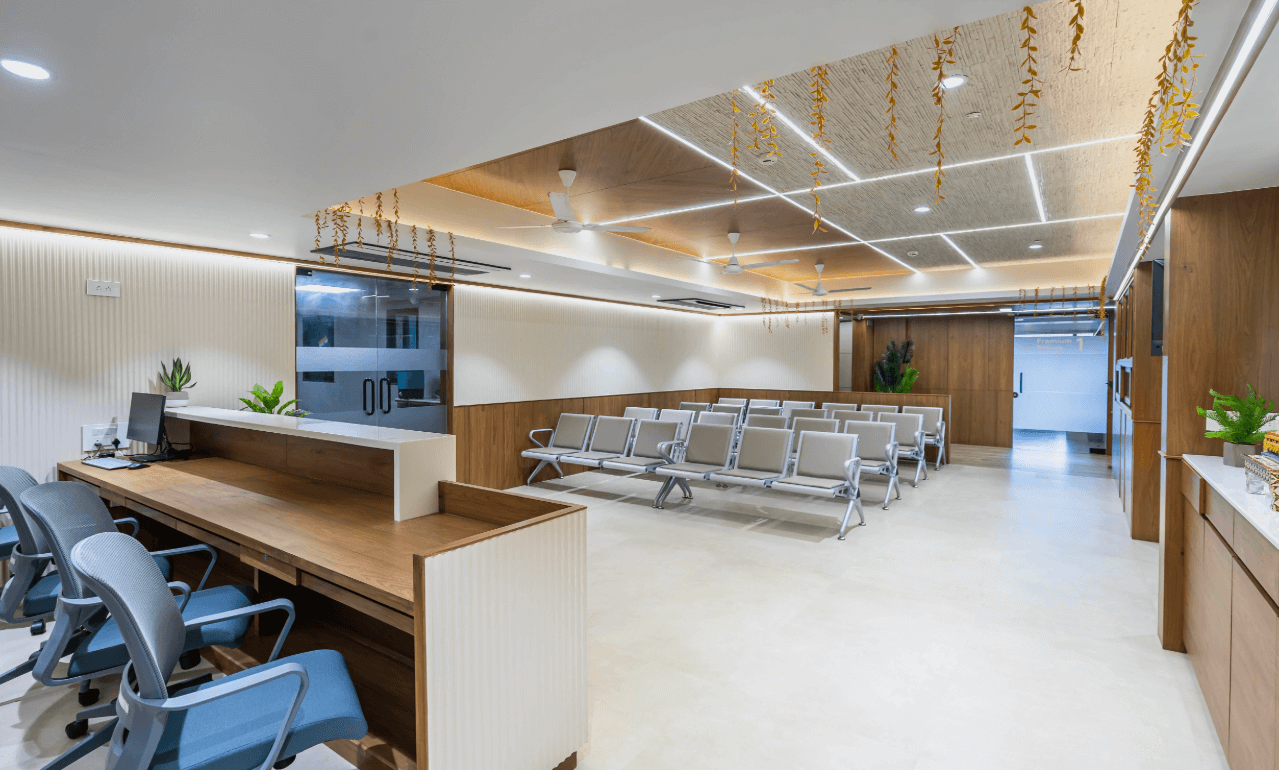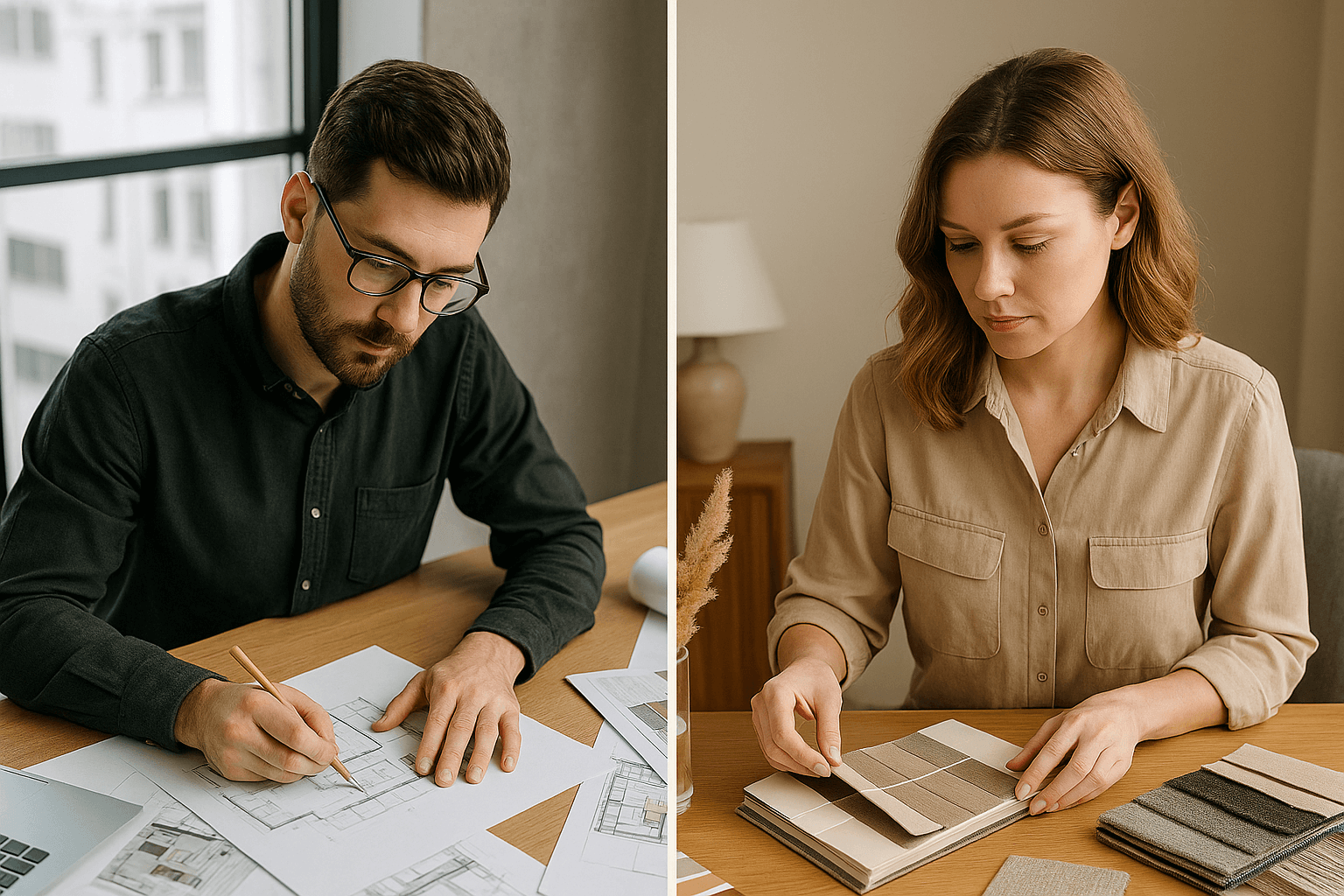Have you ever looked at a beautifully styled shelf, console table, or coffee table and thought, “Why does this look so perfect?”
Often, the answer lies in one simple design principle: the 3-5-7 Rule.
This rule is used by interior designers across the world because it instantly makes decor arrangements feel more natural, balanced, and visually interesting—without adding any complexity. Whether you’re styling a modern living room, a cozy bedroom, or even a kitchen counter, this rule can completely change how your space looks and feels.
What Is the 3-5-7 Rule in Interior Design?
The 3-5-7 Rule is a classic interior styling guideline that suggests decor objects look best when they are arranged in odd numbers—especially 3, 5, or 7.
Instead of placing objects in pairs (2, 4, or 6), grouping items in odd numbers creates a more dynamic, organic visual flow.
For example:
- Three vases on a console look more artistic than two.
- Five cushions on a sofa appear fuller and more intentional than four.
- Seven small plants on a long shelf feel lively instead of stiff.
Odd-number groupings create the kind of “effortlessly stylish” look you often see in designer homes.
Why Do Odd Numbers Work So Well?
Odd numbers appeal to the human eye in a way even numbers don’t.
Here’s why the 3-5-7 rule works:
1. Odd numbers create visual movement
Even-number arrangements tend to look symmetrical and predictable.
Odd numbers introduce a slight imbalance — in a good way — adding energy and curiosity.
2. They feel more natural
Think of nature: flowers, leaves, stones, branches — they rarely occur in perfect pairs.
Odd-number arrangements feel more organic and less staged.
3. They help guide the eye
A group of 3, 5, or 7 objects forms an invisible triangle or composition line that naturally pulls your eye in and around the objects.
Examples:
- 3 candles on a dining table → clean and elegant
- 5 frames on a gallery wall → structured but artistic
- 7 planters on a long console → lively and rich
This is why top interior designers use the 3-5-7 rule intuitively when styling shelves, tables, mantels, beds, and more.
Where Can You Use the 3-5-7 Rule?
The beauty of this rule is that it works almost everywhere. Some of the best places to apply it include:
- Coffee tables: Style with 3 objects: a book, a tray, and a vase.
- Open shelves: Use 5 or 7 items spread across different levels for a curated look.
- Console tables or sideboards: Group objects of different heights to create an eye-catching vignette.
- Bed cushions: Try 3 or 5 cushions instead of 2 or 4 — the bed instantly looks more luxurious.
- Gallery walls: Arrange 5 or 7 frames to add rhythm and visual flow.
- Kitchen counters: Create a stylish corner with 3 items: a chopping board, a jar, and a tiny plant.
Try this small test yourself:
Style a table with two objects, then redo it with three.
You’ll instantly notice how the odd-number arrangement feels warmer, fuller, and more designer-like.
When Should You Break the 3-5-7 Rule?
While the 3-5-7 rule is powerful, it isn’t mandatory. There are moments when even numbers make more sense.
You can skip the odd-number rule when:
- You want a minimalist look with just one statement piece.
- You need symmetry, such as two lamps on a console or two pendant lights in a kitchen.
- The space is small, and too many objects may look cluttered.
- You’re aiming for a balanced pair, like twin bedside tables.
Good design is always about intention — not just following rules.
How to Make Your Odd-Number Groupings Look Professional?
Using 3, 5, or 7 objects is only the first step.
To make them look cohesive and stylish, follow these pro tips:
1. Use a common color palette
Even different items can feel connected if they share similar tones or finishes.
2. Mix heights
Combine tall, medium, and low objects to create depth.
3. Balance shapes
Mix round items with angular ones, or soft textures with hard surfaces.
4. Keep breathing room
Give each object space. Crowding items defeats the purpose.
5. Choose a theme
Nature-inspired, modern, rustic, minimalist — stick to one direction so the styling looks intentional.
Example:
Three ceramic vases in the same color family but different sizes instantly look curated and elegant.
Final Thoughts
Interior design doesn’t always require big changes.
Sometimes, it’s the small, clever styling principles—like the 3-5-7 rule—that transform ordinary spaces into beautifully designed ones.
Using odd numbers adds charm, movement, and balance without needing expensive decor or complicated techniques. With just a bit of practice, you’ll start noticing how much more visually appealing your home becomes.










